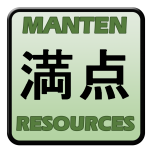The NSW syllabus for the Australian Curriculum has arrived. It is time to get inspired about a new direction in language teaching.
Moving beyond stereotypes of Japan and Australia is an exciting focus of the new Australian curriculum. This is embedded in Stage 5 in the content point:
Investigate the impact of factors such as media, technology, globalisation and popular culture on Japanese, for example, understanding that each region of Japan has its own dialect and accents, and that Japan, like Australia, also has Indigenous languages.
This falls under: Understanding Strand : Systems of language – understanding the language system including sound, writing, grammar, and text structure; and how language changes over time and place. (LJA5-5U, LJA5-6U, LJA5-7U, LJA5-8U) on page 102 of the NSW syllabus for the Australian Curriculum.
How Can I Program for This Outcome and Content Area?
Today we are going to look at some examples of how this outcome and content area is covered in Jblog textbook 3. This content is aimed at Year 10 students.
1. AINU CULTURE OF HOKKAIDOU: Chapter 1 Jblog textbook 3
The most obvious unit topic is the Ainu culture of Hokkaidou. Jblog 3 chapter 1 addresses this topic through the letter of an Australian of Aboriginal heritage who plans to visit Japan. Students learn about the changing attitudes to Ainu language and culture over the years and note similarities with events and issues in Australian history. Other parallels between the Ainu and Australian Aboriginal and Torres Strait Islander cultures are discussed such as their shared strong oral traditions and links to nature.
Teacher knowledge check:
- Which animal is culturally significant to the Ainu people?
- How did the system of “ancestral beings and personally significant entities” in Australian Aboriginal culture support the natural environment?
(Answers are on page 3 of Jblog textbook 3.)
2. KANSAI REGIONAL DIALECT: Chapter 2 Jblog textbook 3
In chapter 2 the concept of regional difference and identity is explored through a unit on しゅうがくりょこう (school trips). Lucy’s class visit the Kansai region where she encounters Kansai dialect such as まいどand おおきに. Culinary specialties such as takoyaki and okonomiyaki highlight the impact of trade on regional cooking developments.
Teacher knowledge check:
- Which ingredient accessed through trade had the greatest impact on Kansai cuisine?
- What do まいど and おおきに mean in English?
(Answers are on page 16 of Jblog textbook 3.)
3. OKINAWA: Chapter 4 Jblog textbook 3
A less common approach to a unit on this content is Okinawa, which is the focus of Chapter 4. Stereotypes of Japan are based predominately on the mainland experience. This unit looks at the complex issue of cultural identity and the influence of interactions with others in history. This enables us to look at the influence of China and America on Okinawan language, food and lifestyle.
For those who like to structure their units in an inquiry based learning format, the key question for the unit could be: “Japan is a mono-cultural society. How does Okinawa disprove this statement?”
After unpacking some key historical events that influenced Okinawa’s past, we consider the more recent generational changes occurring. The button below takes you to a task on the influence of generational change on Okinawan diet and health outcomes. Students can then reflect on what cultures influence their own local area and what evidence can they see of generational change in their own communities.
How Can We Teach Language Content in Such Units?
Some of you may be wondering what type of language content fits in with such units that require this degree of higher order thinking skills. You can take our Okinawa Quiz challenge to see an example of how the language is embedded in the cultural focus.
This quiz appears on pages 52-53 of Jblog textbook 3. You can email me if you would like a copy of the answers.
I Am Not in NSW. What Outcomes Would Work for Me?
This unit could also work for:
- Australian Curriculum: ACLJAU035
- Victorian Australian Curriculum: VCJAU034; VCJAU035; VCJAU197
